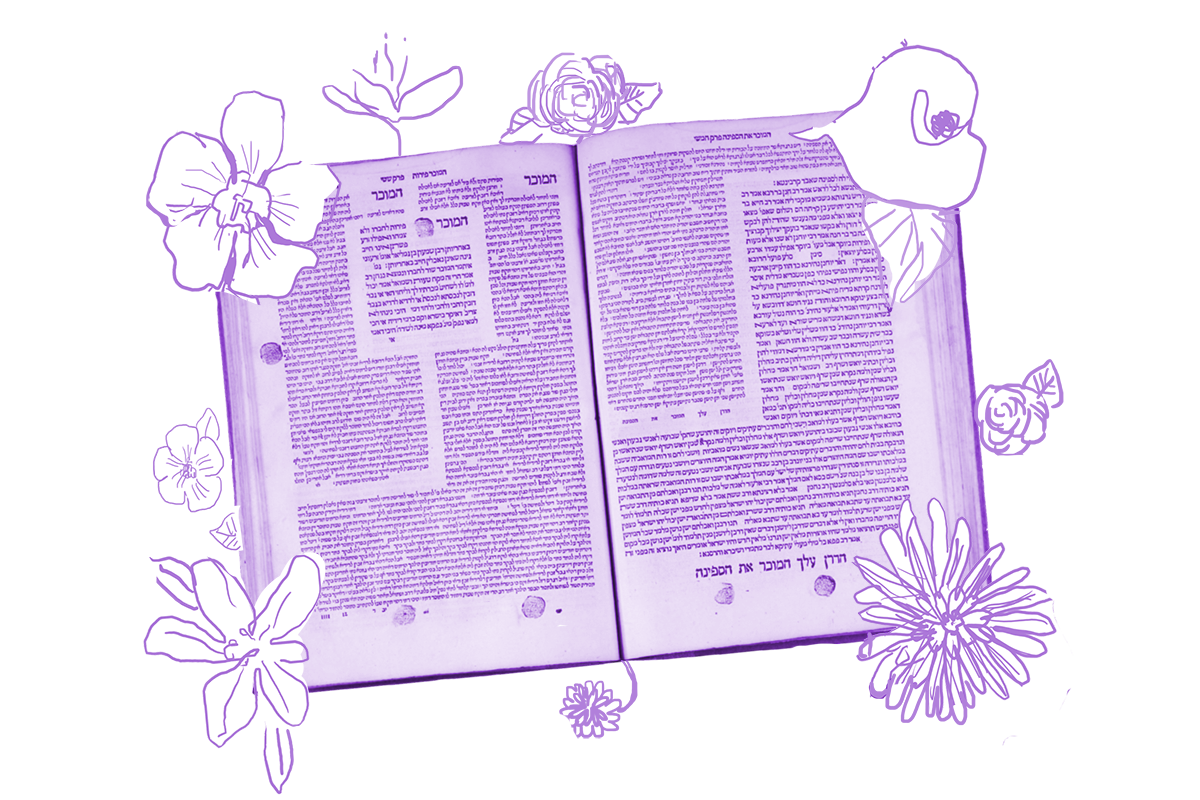The early rabbis were creative in how they read scripture but did not always agree on which methods were acceptable. Most Tannaitic rabbis followed one of two schools of thought on midrash, that of Rabbi Akiva and that of Rabbi Ishmael. Today’s daf presents an example of the reasoning of each school.
The topic of discussion is the ritual of piercing the ear of a slave who decides to remain with their master. Deuteronomy 15:17 states, “Then you shall take the awl and put it through his ear and into the door, and he shall be a servant to you forever; and also to your maidservant you shall do likewise.” The Tannaitic rabbis want to know which tools are acceptable for piercing a slave’s ear and which are not, and two interpretations are offered:
“An awl”: (From this word) I only know that an awl can be used. From where do I learn that a prick, a thorn, a needle, a borer, or a stylus (can also be used)? The verse states, “then you shall take” to include any thing that is taken in one’s hand — these are the words of Rabbi Yose son of Rabbi Yehudah.
Rebbi says: Just as an awl is unique in that it is made of metal, so too any tool of metal (may be used).
With your help, My Jewish Learning can provide endless opportunities for learning, connection and discovery.
Rabbi Yose son of Rabbi Yehudah derives from the verse that anything handheld that has the capability to pierce can be used to pierce a slave’s ear, while Rebbi thinks the tool must be made of metal. Before determining which is correct, the Gemara wants to understand exactly how these sages each arrived at their interpretation, and explains that they are using different techniques from the two great interpretive schools.
Rebbi, according to the Gemara, uses the method of klal u’frat u’klal, which translates to “generalization, detail, generalization.” It is a technique employed by the school of Rabbi Ishmael. Here’s how it works: “Then you shall take” is a generalization, “an awl” is a detail, “through his ear and the door” is again a generalization. The idea is that a generalization is introduced, followed by a relevant detail limiting the generalization. When the generalization is reintroduced, it can only be generalized to things similar to the detail given. In other words, the detail serves as an interpretation and limitation on the general rule, but we still may extrapolate from it. His conclusion? One must use metal implements.
But Rabbi Yose son of Rabbi Yehudah (again, according to the Gemara) uses a different interpretive principle associated with the school of Rabbi Akiva: ribuyei u’miyutei, meaning “inclusions and exclusions.” Here’s how the Gemara explains it:
“Then you shall take” includes, “an awl” excludes, “through his ear and the door” includes again. An inclusion, an exclusion, and an inclusion — everything is included. What is included? Everything. What is excluded? Drugs (i.e. a corrosive substance used to pierce the ear).
Rabbi Yose son of Rabbi Yehudah focuses on the same three phrases in the verse as his colleague, but lands on a more expansive interpretation. His reasoning, according to the Gemara, follows a similar pattern: “then you shall take” implies that any tool may be used, while “an awl” restricts this to items similar to an awl. So far, this is in fact the same reasoning as the klal u’frat uklal interpretation. But when we come to the third phrase, the conclusion changes: “through his ear and the door,” another generalization of the actions described in the verse, tells us that everything is again included (except for one particular example excluded by the previous restriction). In this case, a corrosive substance used to pierce an ear is so different from the action commanded in the verse that it would not fulfill the intent of the verse and would be an invalid piercing. The exclusion, then, unlike the detail in Rebbi’s interpretation, serves as a particular example of the generalization or inclusion rather than an interpretation of it.
Rabbi Ishmael is famous for understanding the Torah to be written in “the language of people” — that is to say, it is written in the way people tend to understand. Klal u’frat uklal is Rabbi Ishmael’s preferred hermeneutic because it arrives at what he would deem a commonsensical interpretation of its meaning: Any tool similar to an awl can be used, as most people would understand the verse this way. Limiting to awls alone would be an overly-literal stretch of people’s general understanding of language. But allowing practically any tool under the sun would not seem to match the plain meaning of the verse. Rabbi Akiva, on the other hand, is less concerned with what a verse might appear to say on the surface and looks for deeper meanings. In this case, he reads it to allow a broader range of piercing implements than a casual reader of the verse might suppose is meant.
Read all of Kiddushin 21 on Sefaria.
This piece originally appeared in a My Jewish Learning Daf Yomi email newsletter sent on September 3rd, 2023. If you are interested in receiving the newsletter, sign up here.



